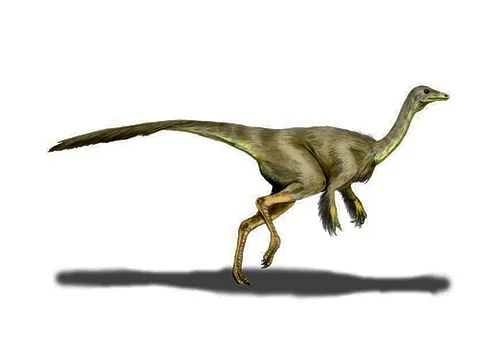Struthiomimus (Ostrich mimic)

Stru-fee-oh-mime-us
Henry Fairfield Osborn - 1917
Omnivore
Estimated 4.5 meters long
Sauropod
S. altus (type), S. sedens
Canada, Alberta - Dinosaur Park Formation and Horseshoe Canyon Formation. USA - Hell Creek Formation
Late Cretaceous, 77-66 million years ago
Struthiomimus Facts
Struthiomimus, which means “ostrich mimic”, was a fast and agile theropod dinosaur that lived in North America during the Late Cretaceous period, around 77 to 66 million years ago.
Struthiomimus was a relatively large ornithomimid dinosaur, with a long neck, small head, and long, slender legs. It was a bipedal dinosaur, meaning that it walked on two legs. Its arms were small and ended in three-fingered hands that were not used for grasping prey or objects.
One of the most distinctive features of Struthiomimus was its beak-like mouth, which it used to pick up vegetation and small animals. It had a flexible neck that allowed it to move its head around and reach a wide variety of food.
Struthiomimus was a fast runner and could move quickly on its long legs. It likely used its speed and agility to escape predators like Tyrannosaurus rex. In addition, its small size and light weight may have allowed it to avoid being detected by larger predators altogether.
Fossils of Struthiomimus have been found in many parts of North America, particularly in the western United States and Canada. Based on the fossils, scientists have estimated that Struthiomimus grew up to around 4.5 meters (15 feet) in length and weighed around 150 kilograms (330 pounds).
Overall, Struthiomimus is an important dinosaur because it was a member of a group called ornithomimids, which are known for their bird-like appearance and habits. It is believed that many of these dinosaurs were omnivorous, meaning that they ate both plants and animals, and some may have even had feathers. The study of ornithomimids helps scientists better understand the evolution and behavior of theropod dinosaurs.



